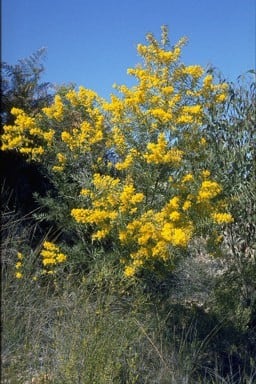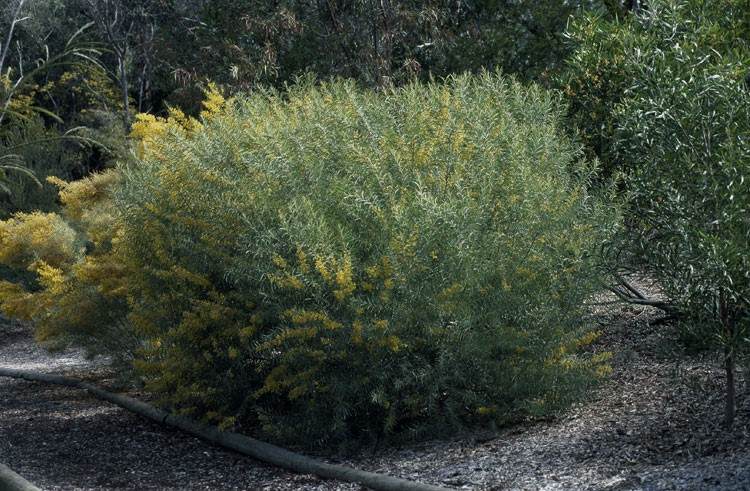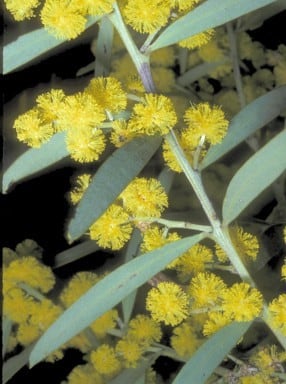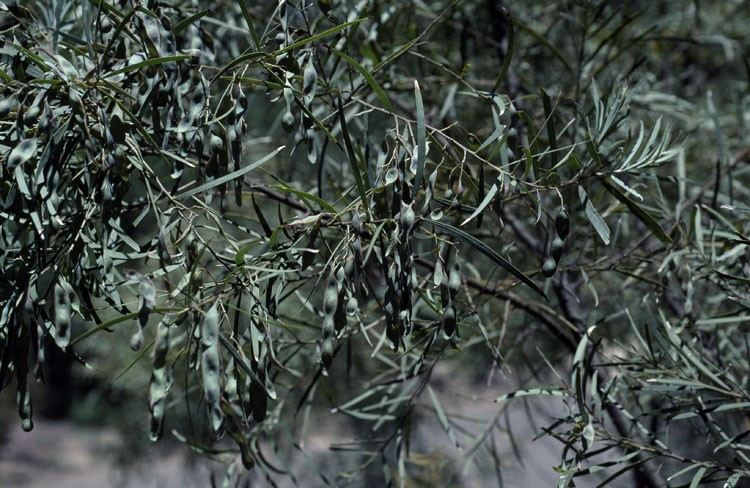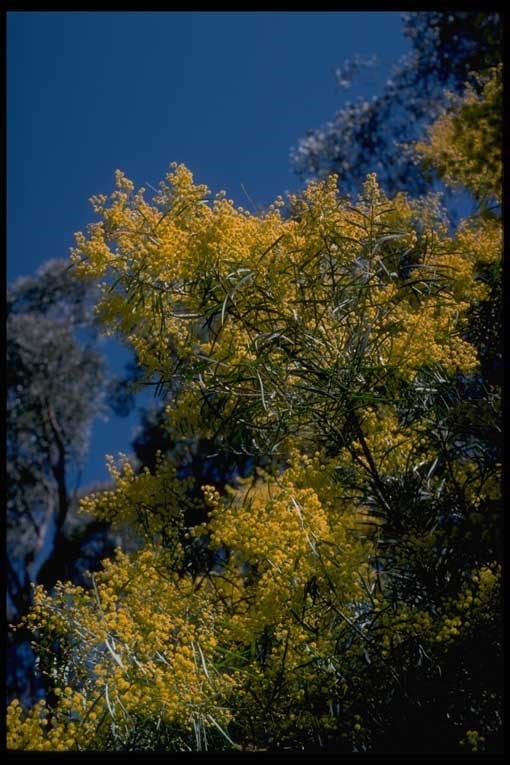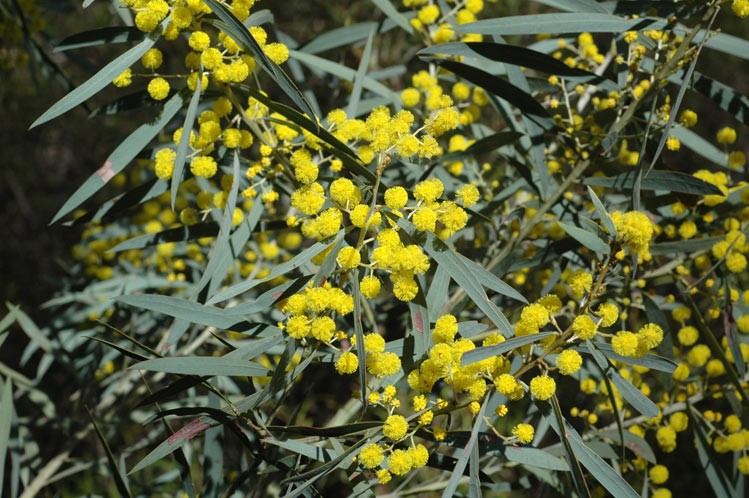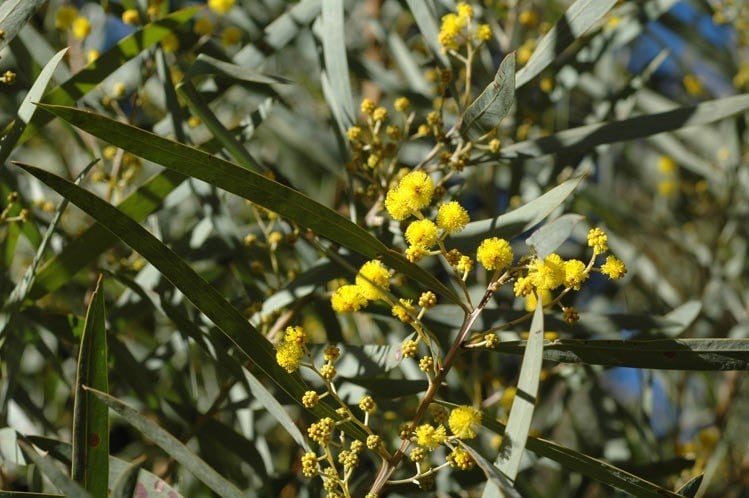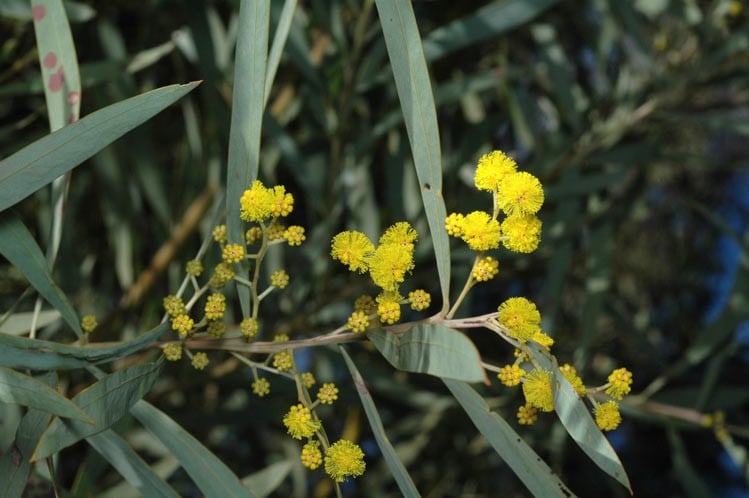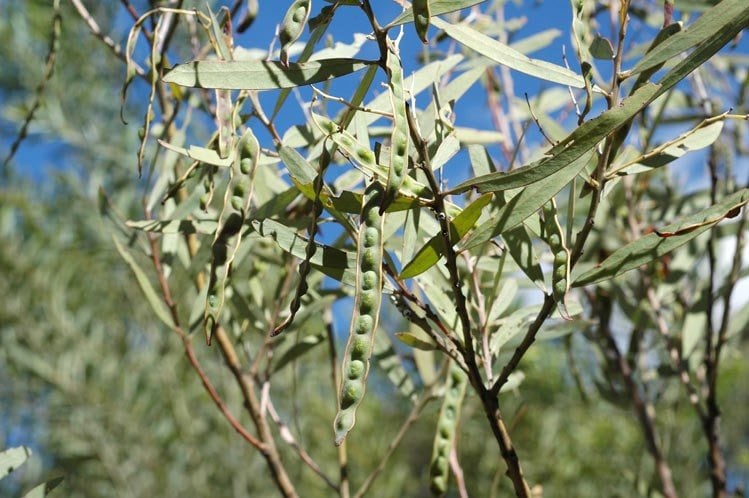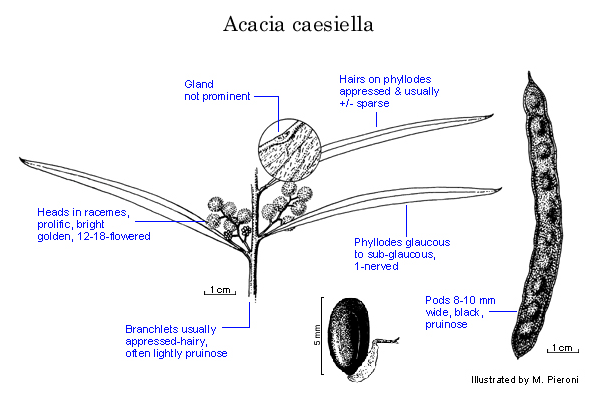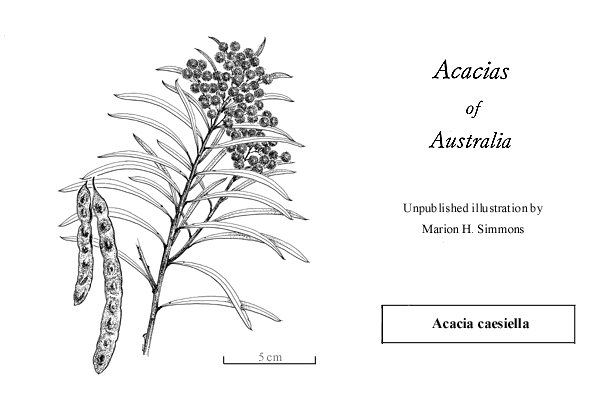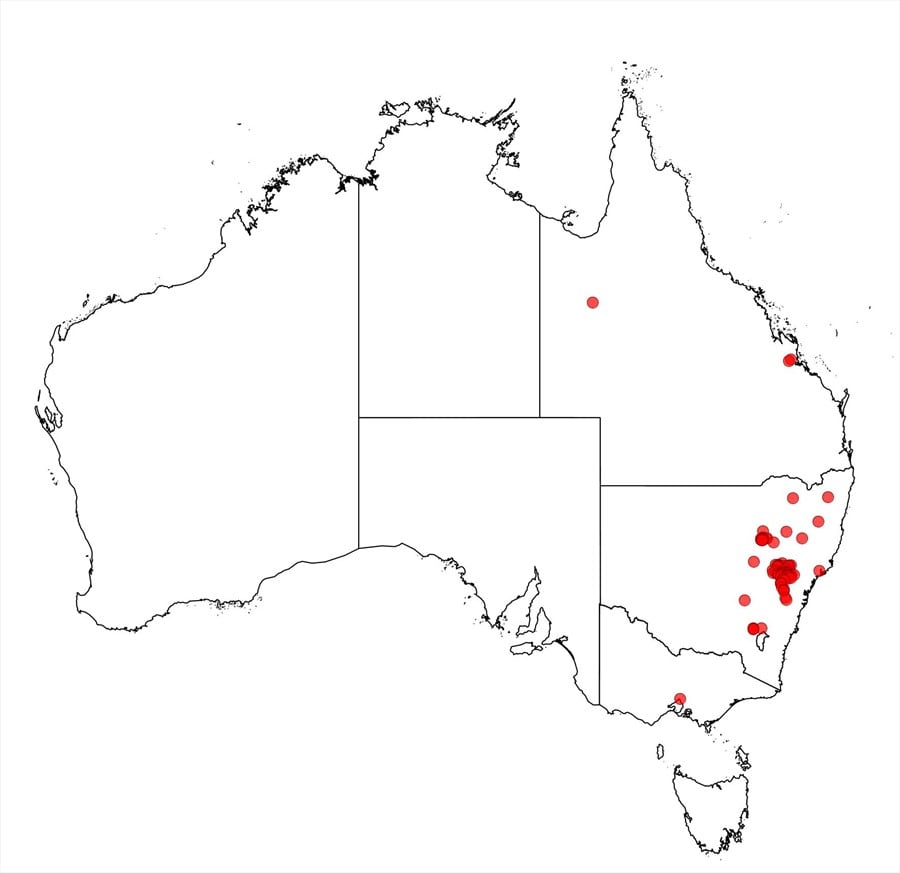Acacia caesiella Maiden & Blakely
WATTLE
Acacias of Australia
Common Name
Tableland Wattle, Bluebush Wattle, Blue Bush
Family
Fabaceae
Distribution
Occurs in N.S.W. from the Warrumbungle Ra. to Lithgow, and further S near Burrinjuck.
Description
Normally a multistemmed shrub 1.5–4 m high with a mallee habit, sometimes a tree to 7 m high. Branchlets angled at extremities, often lightly pruinose, with indumentum usually of moderate to dense appressed straight hairs. Phyllodes patent to erect, sometimes deflexed, linear to narrowly elliptic, 4–10 cm long, usually 3–6 mm wide, thin, glaucous to subglaucous, with indumentum similar to branchlets except sparser, sometimes ±glabrous, 1‑nerved; lateral nerves obscure; gland not exserted, 3–20 mm above pulvinus. Inflorescences 6–12-headed racemes, prolific in upper axils; raceme axes normally 1–4 cm long, with indumentum as on branchlets; peduncles (2–) 3–5 mm long, with indumentum as on branchlets; heads globular, 12–20-flowered, golden; bracteole laminae ±circular, brown, white-fimbriolate. Flowers 5-merous; sepals united almost to their apices; ovary densely pubescent. Pods to 8 cm long, (6–) 7–10 mm wide, firmly chartaceous, black, pruinose, glabrous, dehiscing unilaterally. Seeds longitudinal, ±oblong, 5–6 mm long, slightly shiny, black; aril clavate.
Habitat
Normally grows in sand on sandstone, in Eucalyptus forest or open woodland.
Specimens
N.S.W.: Burrinjuck, Aug. 1922, J.W.Campbell per C.Andrews (NSW); 20.8 km by road E of Rylstone on Mt Coricudgy Rd, R.Coveny 6605 & P.Hind (A n.v., CANB n.v., G n.v., K n.v., MEL n.v., NSW, P n.v., TNS n.v., UC n.v., US n.v., Z n.v.); 9.3 km NNE of Rylstone on the road to Bylong, B.R.Maslin 5912 (MEXU, NSW, PERTH); Warrumbungle Mtns, B.A.Hamilton 70 (NSW).
Notes
A variable species. Most specimens have a characteristic indumentum of straight, appressed, silvery white hairs. However, a glabrous variant with phyllodes 4–8 cm ´ 4–5 mm occurs at Breakfast Ck, Bylong (e.g. J.E.Carne, NSW167292) and a variant with ±patent branchlet hairs occurs at Kerrabee, Goulburn R. (e.g. G.W.Althofer, NSW167293). The phyllodes on some specimens from the vicinity of Mt Coricudgy, E of Rylestone, are broader than normal (to 12 mm wide) and/or shallowly recessed at the gland or the gland is connected to the midrib by a fine oblique nerve (e.g. D.J.McGillivray 1578, NSW, PERTH).
Closely related to A. barringtonensis which has shorter branchlet hairs (> 0.1 mm compared with 0.1–0.2 mm) and usually broader, dark brown pods. Also, except for the Mt Coricudgy variants noted above, the phyllodes of A. caesiella are generally narrower than those of A. barringtonensis and are not recessed at the gland which is not connected to the midrib by a fine oblique nerve.
FOA Reference
Data derived from Flora of Australia Volumes 11A (2001), 11B (2001) and 12 (1998), products of ABRS, ©Commonwealth of Australia
Author
B.R.Maslin
Minor edits by B.R.Maslin
This identification key and fact sheets are available as a mobile application:
URL: https://apps.lucidcentral.org/wattle/
© Copyright 2018. All rights reserved.

